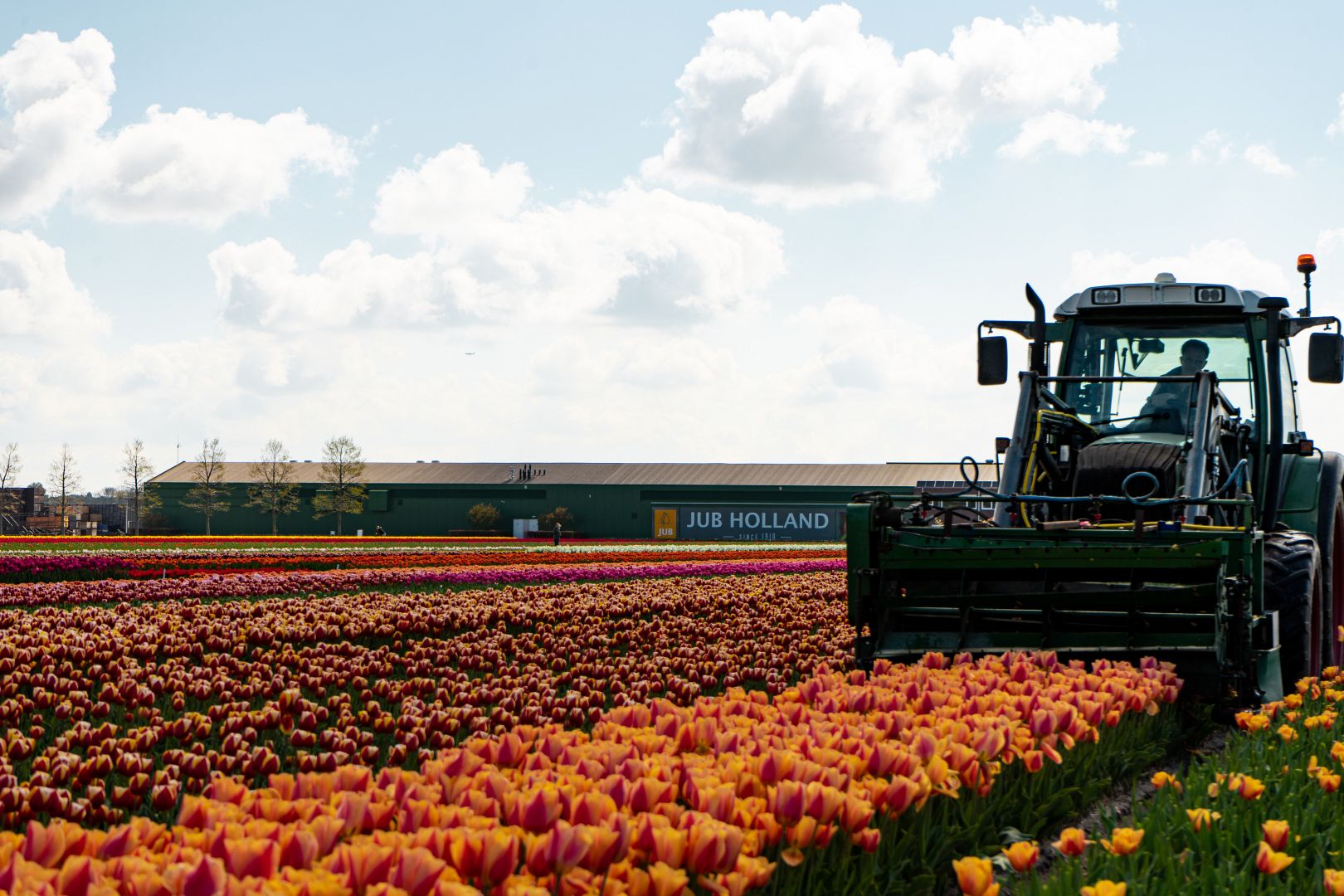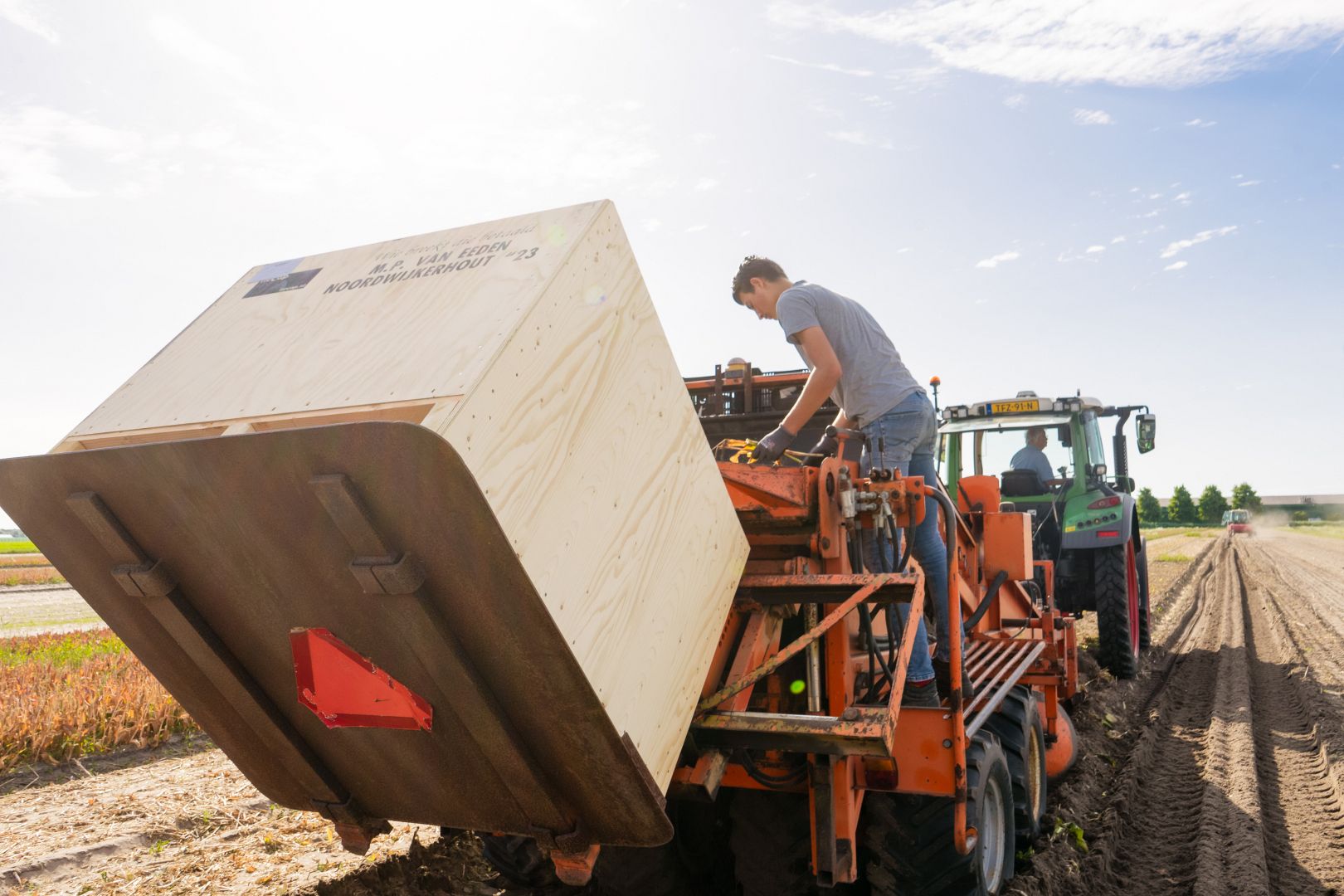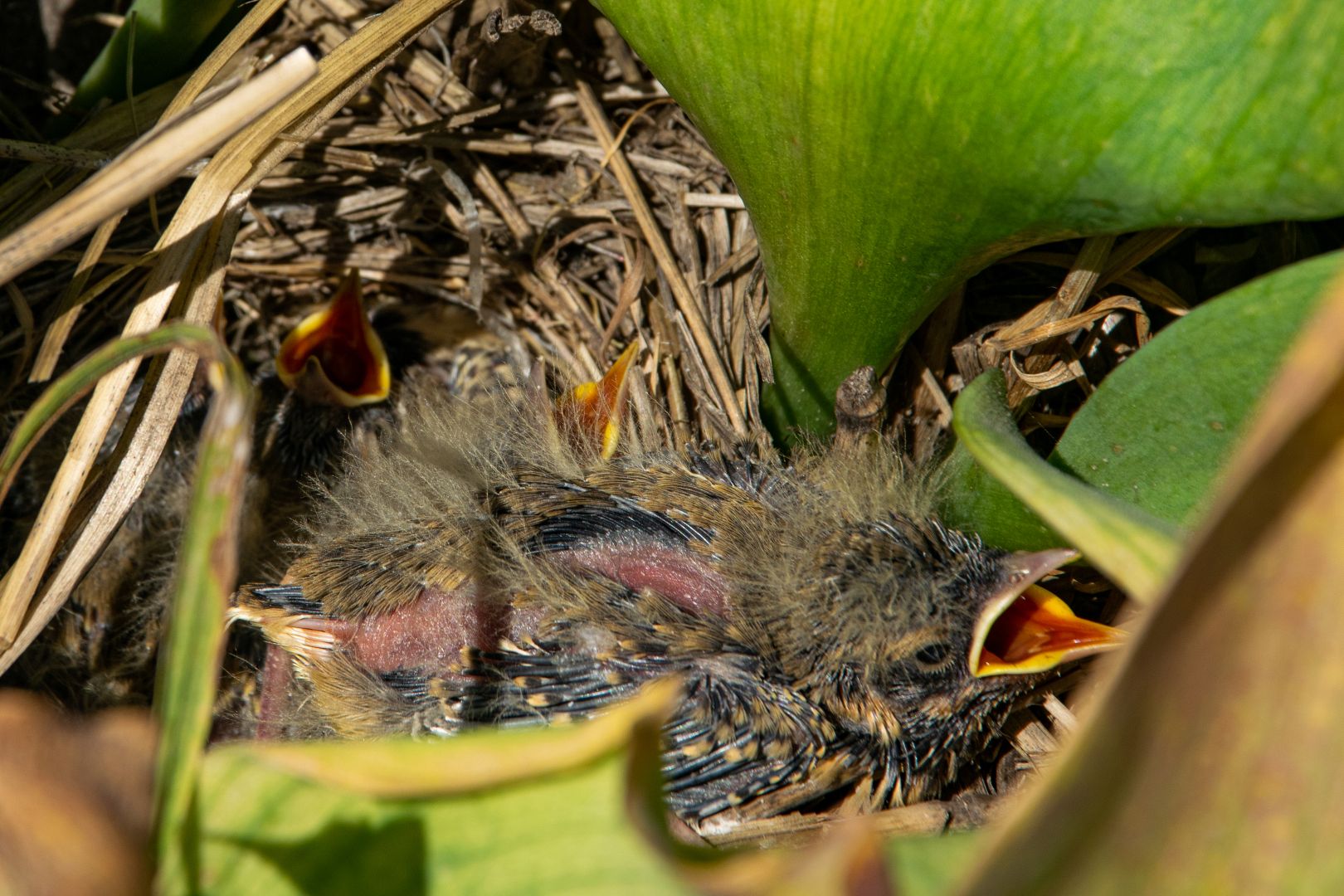Our own nursery
Progressive Since 1910
Bulb Nursery and Trade, Four Generations of Craftsmanship
JUB Holland stands out as one of the few bulb companies that both cultivates and trades in bulbs, as well as exports them. We are versatile and master the entire process: hybridising, cultivating, and trading; JUB handles it all in-house. Thanks to our extensive expertise, which comes from our own nursery, and our innovative approach, we can differentiate ourselves through personal contact and by collaborating with our customers.
On 35 hectares of land, we cultivate various types of tulips, daffodils, and camassias outdoors. Additionally, we focus on breeding new tulip varieties in collaboration with 'Remarkable'. Together, we are committed to developing new, exclusive tulip varieties of the highest quality. In our nursery, we are continuously engaged in development and conduct extensive research, often in collaboration with universities and research centers.
What We Do at the Nursery
At JUB Holland, we offer an extensive range of spring and summer bulbs. At our nursery in Noordwijkerhout, we cultivate approximately 45 different types of tulips, including varieties from Remarkable, as well as 15 types of daffodils and camassias. With 35 hectares of cultivation land and a dedicated team, we produce top-quality bulbs. As much as 90% of our bulbs are used for our own exports to retail and landscape customers; the remainder is sold to exporters and growers. In collaboration with Remarkable, we breed tulip varieties that can grow with fewer protective agents, and we cultivate these new types ourselves. This makes JUB Holland's nursery particularly special.
The Process: From the Field to the Consumer
At the bulb nursery of JUB Holland, there is always activity. A comprehensive process takes place before the bulbs ultimately reach the consumer. From planting to processing, each part of this process is focused on delivering the highest quality bulbs.

Planting and Preparing for Winter
At JUB Holland, the process begins in September with the planting of the planting stock: small bulbs that come from the main bulb. Using a planting machine, the bulbs are placed in the ground, after which we cover the soil to protect it from cold and drying out. In the spring, the first flowers begin to bloom, and intensive care starts.
Quality Control and Topping Flowers
Starting in March, the first daffodils bloom, attracting tourists from all over the world to the fields. This marks the beginning of a busy period for bulb growers. During the 'disease scouting,' sick and abnormal plants are carefully removed. For tulips, the flowers are topped to direct all energy to the bulb, allowing it to grow well. Daffodils do not need to be topped, as their flowers naturally wither. After flowering, the crop dies back, and the bulb absorbs all the nutrients from the leaves and stems. This results in a strong bulb with new, smaller bulbs that can later be planted.
Harvesting and Processing Bulbs
In June and July, the harvesting season begins. Using harvesting machines, the bulbs are extracted from the ground and screened to remove the sand. The bulbs are then dried in boxes on special drying walls to prevent mold formation. On the processing line, also known as the peeling line, the small bulbs are separated from the main bulb, root remnants are removed (peeled), and the bulbs are sorted by size. After an additional quality control, the largest bulbs are designated for the retail and landscape assortment, while the smallest bulbs are reserved as planting stock.
Preparing Planting Material for the New Planting Season
The planting material receives special attention in preparation for the upcoming growing season. Daffodil bulbs undergo a heat treatment to combat nematodes: the bulbs are heated to kill parasites. This process ensures healthy planting material for the coming season. This treatment is not necessary for tulips. Thanks to this carefully executed process—from planting to harvesting—JUB Holland delivers high-quality bulbs, with respect for people, nature, and the environment.

Sustainability at the Nursery
At JUB Holland, we view sustainability not as a buzzword, but as a fundamental aspect of our operations. Our nursery serves as a living laboratory where innovation and conservation go hand in hand.
Sustainable Initiatives
In our demonstration field, which has been specifically established for research purposes, we test methods to reduce the use of pesticides. We experiment with biological pest control and cover the soil with wood fibers to limit weed growth, contributing to a cleaner and more sustainable cultivation process. Additionally, we utilize drainage with iron sand in the soil, which reduces phosphate runoff into surface water by 30% to 60%.
We also prioritize biodiversity. We sow field margins with mixtures of herbs that attract natural enemies of pest insects, and we enhance the habitats of wild animals, such as partridges. Between the plots, we have created a habitat of 325 m² with native vegetation, duck nests, and birdhouses, where animals can live and breed without disturbance. Furthermore, we partially dredge ditches to promote biodiversity in and around the water.
Organic Cultivation
Another important initiative is our organic field, where we grow tulips, daffodils, and hyacinths entirely organically. We do this in collaboration with other growers, with the aim of further scaling up this organic cultivation in the future. Additionally, we partner with a SKAL-certified grower, with whom we cultivate organic bulbs for our trade.
Our nursery meets the strict standards of sustainability certificates such as PlanetProof and MPS-A. With these certificates, we demonstrate year after year that we are making progress toward a cleaner and more sustainable cultivation process.
.png)
_2022.jpg?1741258066&1741258066=)


.jpg?1741258066&1741258066=)
Our Vision for the Future with the Nursery
At JUB Holland, we always look ahead. We are committed to sustainable cultivation and higher product quality by investing in organic bulbs. By collaborating closely with external growers and expanding our own organic field for more research, we aim to offer an even wider range of organic bulbs in the future. However, this is a long-term journey.
In the field of breeding, we continue to innovate, such as with our unique camassia breeding program, where we develop new colors like pink, yellow, and cream. This process requires patience and craftsmanship. We also strive for technological innovation and are constantly working on advancements in automation, such as disease detection robots and more efficient processing systems. In this way, JUB Holland is working towards a future where innovation, sustainability, and quality are at the forefront.







.jpg?1552550832&1552550832=)



